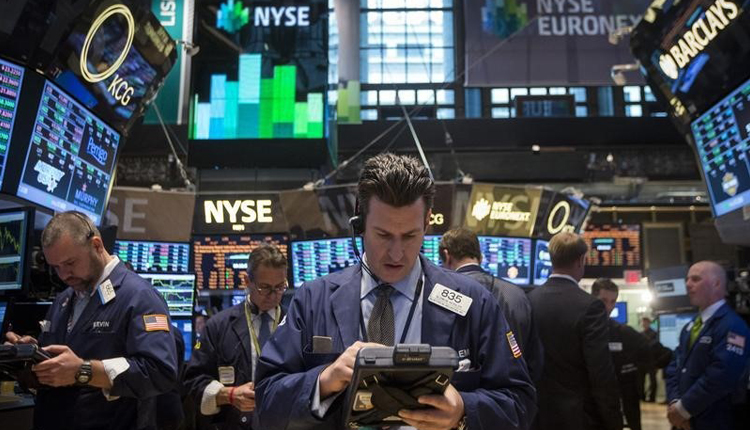U.S. stocks rebounded on Tuesday from their worst day of the year after China’s central bank indicated it plans to keep its currency at a level stronger than some investors had first feared, easing tensions about the nation using the yuan as a weapon in the trade war. The Dow Jones Industrial Average closed 311.78 points higher at 26,029.52.
The S&P 500 rose 1.3 percent to 2,881.77, while the Nasdaq Composite climbed nearly 1.4 percent to 7,833.27. Tuesday’s gains helped the Dow snap a five-day losing streak, while the S&P 500 and Nasdaq rose for the first time in seven sessions.
The bounce in equities came after Wall Street’s major indexes suffered their worst day of 2019 on Monday, when a peak in trade-related angst between the U.S. and China sent investors in search of safer assets.
Some of the stocks that led Monday’s sell-off, such as Apple, Micron Technology and Nike, were among the best-performing stocks on Tuesday. Apple and Micron Technology both gained more than 1.5 percent, while the shoe company advanced nearly 3 percent.
The newfound optimism came after China’s central bank set the yuan’s official reference point at stronger than the key 7 yuan-to-the-dollar point. The announcement calmed foreign exchange markets, initially spooked on Monday that the yuan’s weakening under the key psychological level could spark a currency feud.
U.S. equity markets saw their worst trading day of 2019 on Monday. The Dow dropped 767 points while the S&P 500 slid nearly 3 percent. The Nasdaq plunged more than 3 percent on Monday.
“Going forward, stabilization in the U.S./China trade war is now the most important key to broader market stabilization,” said Tom Essaye, founder of The Sevens Report, in a note. “If the escalation continues, that will cause a further pull-back, regardless of what the [Federal Reserve] is going to do. And, I say that because another 25 or 50 basis points of easing by the Fed won’t materially offset a protracted and escalating trade war.”
Notwithstanding Tuesday’s climb, the market remains in negative territory for the month of August.
The sell-off had begun last week when President Donald Trump announced new tariffs on Chinese goods. However, market reaction became even more negative when Chinese authorities let the yuan break to its lowest level against the dollar in more than 10 years on Monday.
Also on Monday, the Treasury Department designated China a currency manipulator, a move that has not been seen since the Clinton administration. Beforehand, Trump took to Twitter to voice his opinion on the currency move.
“China dropped the price of their currency to an almost a historic low. It’s called ‘currency manipulation.’ Are you listening Federal Reserve? This is a major violation which will greatly weaken China over time!,” he tweeted.
China also confirmed earlier reports that it was suspending the purchases of U.S. agricultural products. The U.S.-China trade war has been going on since last year, dimming sentiment and the outlook for corporate profits and economic growth.
National Economic Council Director Larry Kudlow told CNBC’s “Squawk on the Street ” on Tuesday that Trump was still open to a trade deal between the U.S. and China that would lead to flexibility on tariffs.
“The reality is we would like to negotiate,” Kudlow said during a live interview. “We’re planning for the Chinese team to come here in September. Things could change with respect to the tariffs.”
But Keith Lerner, chief market strategist at SunTrust Private Wealth, warned that stocks will likely fall further even after Tuesday’s sharp rebound.
“There are two aspects of a bottoming. There’s a price aspect and a time aspect. The typical corrective period has lasted about a month to a month and a month and a half. We’re only seven days into this,” Lerner said. “I think we’re in for a bumpy ride. It’s going to be very news-headline driven.”
Source: CNBC
